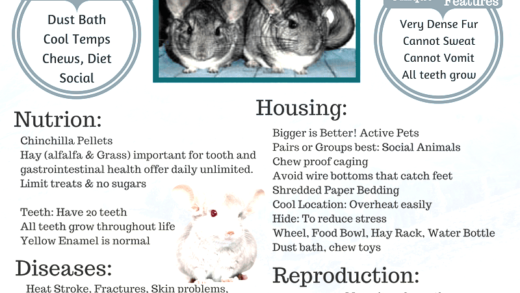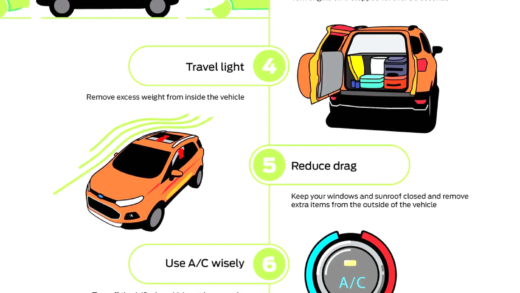NASCAR car handling is a critical aspect of racing performance, influenced by factors such as weight distribution, tire pressure, and track conditions. Understanding loose and tight handling, alongside the role of weather and crew chiefs, is essential for drivers aiming for success on the track.
What Does It Mean When a NASCAR Car is Called ‘Loose’?
NASCAR car handling is crucial for performance, and a ‘loose’ car can significantly affect a driver’s ability to compete effectively. When a NASCAR car is described as loose, it means the rear tires lose grip before the front tires, causing the car to slide or spin out during turns. This condition is often a result of the car’s setup, tire pressure, or weight distribution.
Characteristics of a loose handling car include:
- Increased oversteering: The back end of the car swings out during turns.
- Driver adjustments: Drivers must constantly correct steering to maintain control.
- Potential for faster lap times: In some cases, a loose setup can allow for quicker cornering speeds.
Understanding loose handling is essential for drivers as it can lead to exciting racing moments but also increases the risk of losing control. Proper adjustments, such as modifying tire pressure or changing suspension settings, can help tame a loose car, allowing for better stability and confidence on the track.
What Does It Mean When a NASCAR Car is Called ‘Tight’?
A tight NASCAR car is the opposite of a loose car. In this scenario, the front tires lose grip before the rear tires, causing the car to push or understeer through turns. This condition can hinder a driver’s ability to navigate corners effectively, often resulting in slower lap times.
Characteristics of tight handling include:
- Understeering: The front of the car tends to push toward the wall, making it hard to turn.
- Less responsive steering: Drivers may feel like they have to fight the car to get it to turn.
- Stability: Tight setups can provide more predictability, especially for less experienced drivers.
Grasping the concept of tight handling is vital for success in NASCAR. While it may be easier to control, it can also limit speed and performance. Adjustments like changing weight distribution or altering suspension settings can help alleviate tight handling, allowing drivers to find the right balance between speed and control.
Oversteering vs Understeering: How They Relate to ‘Loose’ and ‘Tight’
Oversteering and understeering are essential terms in understanding loose vs tight NASCAR cars. Oversteering occurs when the rear tires lose grip, causing the back of the car to swing out. This is directly related to loose handling. Conversely, understeering happens when the front tires lose grip, resulting in the car pushing straight. This condition correlates with tight handling.
Key points include:
- Oversteering leads to a loose setup, where drivers must countersteer to regain control.
- Understeering results in a tight setup, requiring adjustments to navigate turns effectively.
- Both conditions can be influenced by factors such as tire wear, track conditions, and vehicle adjustments.
Recognizing the differences between these handling characteristics helps drivers adapt their strategies during a race. By understanding how oversteering and understeering affect car dynamics, they can make informed decisions on adjustments, ultimately improving their performance on the track.
Factors That Cause a Car to Feel Loose or Tight
NASCAR car handling is influenced by various mechanical and environmental factors. Understanding what causes a car to feel loose or tight is vital for drivers aiming to optimize their performance on the track. Here are some key factors:
- Weight Distribution: The placement of weight in a NASCAR car affects its handling. A rear-heavy setup may lead to loose handling, while a front-heavy setup can cause tightness.
- Tire Pressure: Incorrect tire pressure can significantly alter how a car handles. Low pressure might cause a loose feeling, whereas high pressure can create tightness.
- Suspension Settings: The stiffness or softness of suspension components directly impacts handling. Softer suspensions can lead to oversteering, while stiffer setups may contribute to understeering.
- Tire Wear: As tires wear down, their grip diminishes. This can lead to unexpected loose or tight handling, particularly towards the end of a race.
- Track Conditions: Changes in the track surface, including temperature and moisture levels, can drastically affect handling. A slick surface may cause a car to feel loose, while a grippy surface can make it feel tight.
Recognizing these factors allows drivers and crew chiefs to make informed decisions about car adjustments, ultimately improving race performance.
Adjusting NASCAR Car Handling from Loose to Tight
Adjusting NASCAR car handling is essential for drivers who want to switch from a loose to a tight setup. Here are common adjustments that can be made:
- Changing Tire Pressure: Decreasing rear tire pressure can help tighten a loose car. Conversely, increasing front tire pressure may alleviate tightness.
- Weight Adjustments: Shifting weight towards the front can help reduce oversteering, making the car feel tighter. This can be achieved by adjusting ballast or moving components.
- Suspension Modifications: Altering suspension settings, such as adding more stiffness to the rear springs, can help stabilize a loose car.
- Shock Settings: Adjusting the shocks can also make a car feel more responsive. Softer settings may help with a tight car, while stiffer settings can assist with a loose setup.
- Alignment Changes: Changing the camber or toe settings can influence handling. More negative camber may help a tight car grip better during turns.
These adjustments are crucial for drivers to fine-tune their cars for optimal performance, depending on track conditions and personal driving style.
Impact of Track Surface on NASCAR Handling
The track surface plays a significant role in how NASCAR cars handle. Different surfaces can create unique challenges for drivers. Here’s how track conditions influence handling:
- Surface Material: Asphalt vs. concrete surfaces can offer varying grip levels. Asphalt tends to be more forgiving, while concrete can be slick, affecting tire traction.
- Weather Effects: Rain or humidity can create slippery conditions, leading to loose handling. Conversely, hot weather may cause tires to grip better.
- Track Age: Older tracks may develop bumps and cracks, which can impact car dynamics. Drivers often need to adjust their handling to cope with these changes.
- Grip Levels: A newly paved track may provide excellent grip initially, but as the race progresses, rubber builds up, altering handling characteristics.
- Temperature Changes: As the day progresses, track temperature can rise, affecting tire performance. Cooler temperatures can lead to tighter handling.
Understanding the impact of track surface is vital for drivers to adapt their strategies effectively during races.
Weather Conditions and Their Influence on Car Handling
NASCAR car handling is significantly affected by weather conditions. Factors such as temperature, humidity, and precipitation play critical roles in tire performance and overall vehicle dynamics. For instance, hot weather can cause tires to grip better, leading to tighter handling. Conversely, wet or humid conditions can reduce grip, resulting in a looser car setup.
- Temperature: As track temperatures rise, tires can become stickier, enhancing grip. Drivers may find that their cars handle tighter in hot conditions.
- Rain: Wet surfaces can lead to reduced traction, making cars feel loose. Adjustments to tire pressure and suspension may be necessary to counteract this effect.
- Humidity: High humidity can affect tire pressure and grip levels, leading to unpredictable handling. Drivers must adapt their strategies to these changing conditions.
Understanding the impact of weather on NASCAR car handling is crucial for drivers. It allows them to anticipate changes in vehicle dynamics and make necessary adjustments to maintain performance during races.
Why Knowing NASCAR Car Handling Matters
Grasping NASCAR car handling dynamics is essential for success on the track. Drivers who understand how their cars respond to different conditions can make informed decisions that enhance their performance. Effective handling knowledge enables drivers to:
- Improve lap times: By adjusting car setups based on handling characteristics, drivers can find optimal speed through corners.
- Enhance safety: Understanding handling can prevent loss of control, reducing the risk of accidents.
- Communicate effectively with crew chiefs: A solid grasp of handling allows drivers to articulate their needs for adjustments, leading to better team collaboration.
Ultimately, a deep appreciation for handling dynamics can be the difference between winning and losing in NASCAR.
The Crew Chief’s Role in Managing Car Handling
The crew chief plays a pivotal role in managing NASCAR car handling. This individual is responsible for making critical decisions regarding car setup and adjustments throughout a race. Key responsibilities include:
- Data Analysis: Crew chiefs analyze telemetry and performance data to identify handling issues and suggest solutions.
- Strategy Development: They develop strategies based on track conditions and weather, ensuring the car is optimized for performance.
- Communication: Crew chiefs must effectively communicate with drivers, understanding their feedback and making quick decisions to adjust handling.
The crew chief’s expertise is essential for navigating the complexities of car handling, making them a crucial asset to any NASCAR team.





Comments are closed.